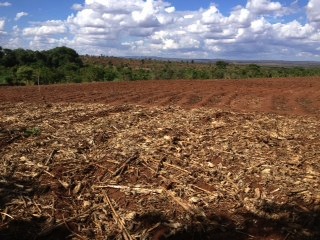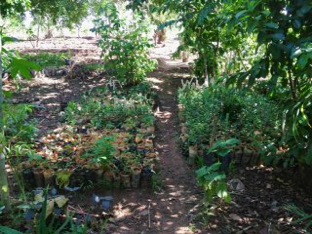By Julia Reynolds (part of the Kusamala mapping team)
This week our research takes us to Nkhundi, a village that lies about a thirty-minute bike ride to the south of Kusamala. Nkhundi is the home of Isaac, Kusamala’s agroforestry expert. Besides cultivating an impressive garden and tree nursery near his home, Isaac has worked with Kusamala as a permaculture outreach coordinator in his village by connecting local stakeholders with permaculture workshops and resources.
On our first day, we visited Isaac’s field and garden:
The boundary of Isaac’s field is evident from the mulch covering the soil, as opposed to the bare ridges of the conventional farm beyond. While many farmers rent land each year, Isaac inherited this land from his father. Ownership of farmland is a huge incentive for maintaining sustainable farming practices—as Isaac put it, why should you invest your resources in land that you won’t use next year?
Isaac’s nursery, shown above, is a green haven to a diverse variety of trees. Instead of clearing the trees on the land, a common practice in Malawi, Isaac has kept most of his trees, thus sustaining the water table. He waters his tree nursery from a nearby well he dug in 1987, which, 25 years later, has not yet run dry.
Close to Isaac’s home is a soon-to-be permaculture garden. Isaac is currently building the soil with crop residue and chicken manure before the rains come. Rain will be gathered from the roof and diverted to the garden, which will provide food for his family. Note the design of the garden—meandering beds help trap water, maximize the cultivated area, and still allow access to all parts of the garden.
After our visit to Isaac’s field and gardens, we met with eight other Nkhundi farmers, five of whom practice permaculture. We plan to interview these farmers to gain an understanding of their farming practices and resources over the next two weeks. In the coming months, our team will work closely with these farmers to create detailed maps of their farmland and gardens, which we hope will not only increase their understanding of land use, but also be used to educate others about the benefits of permaculture design.





